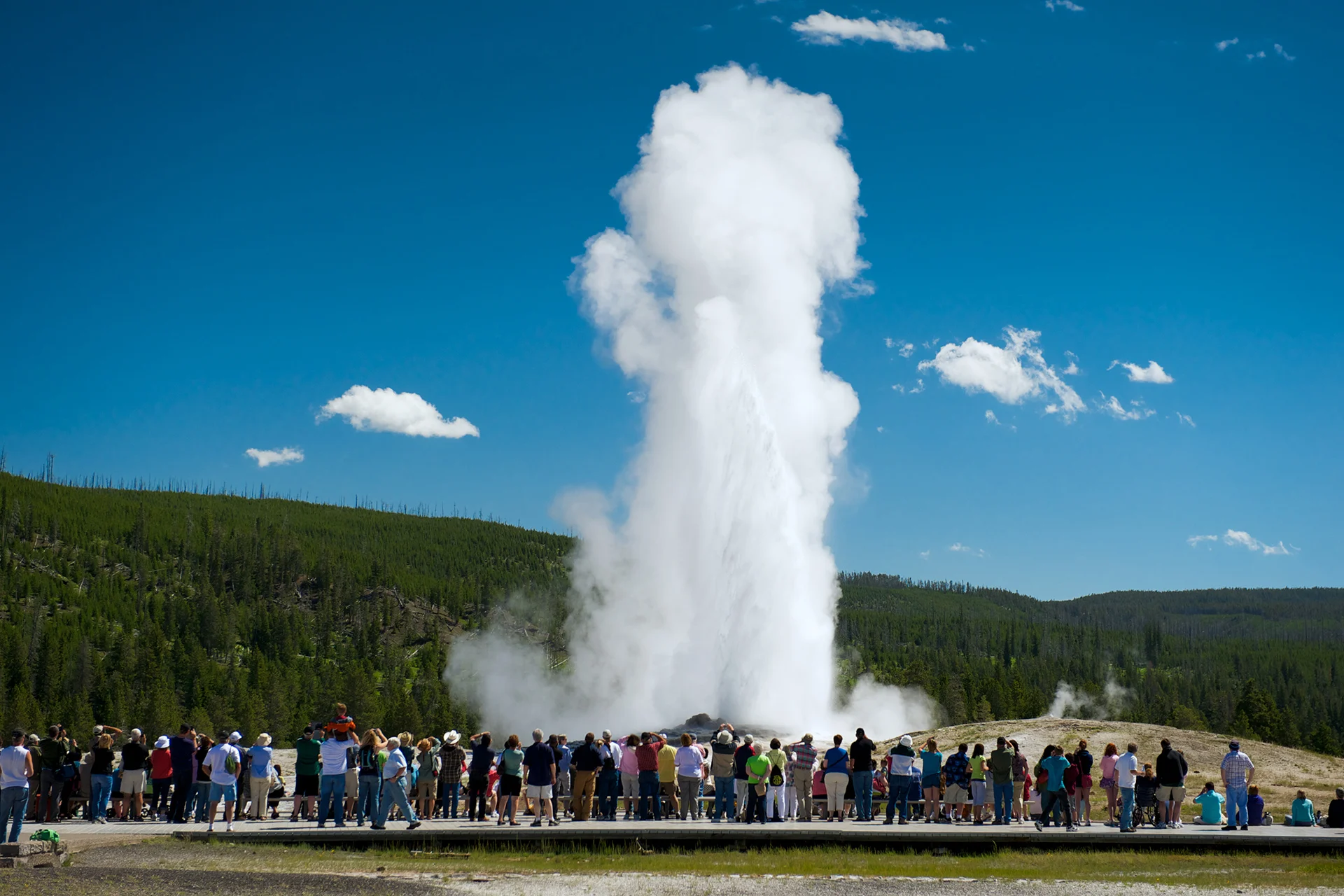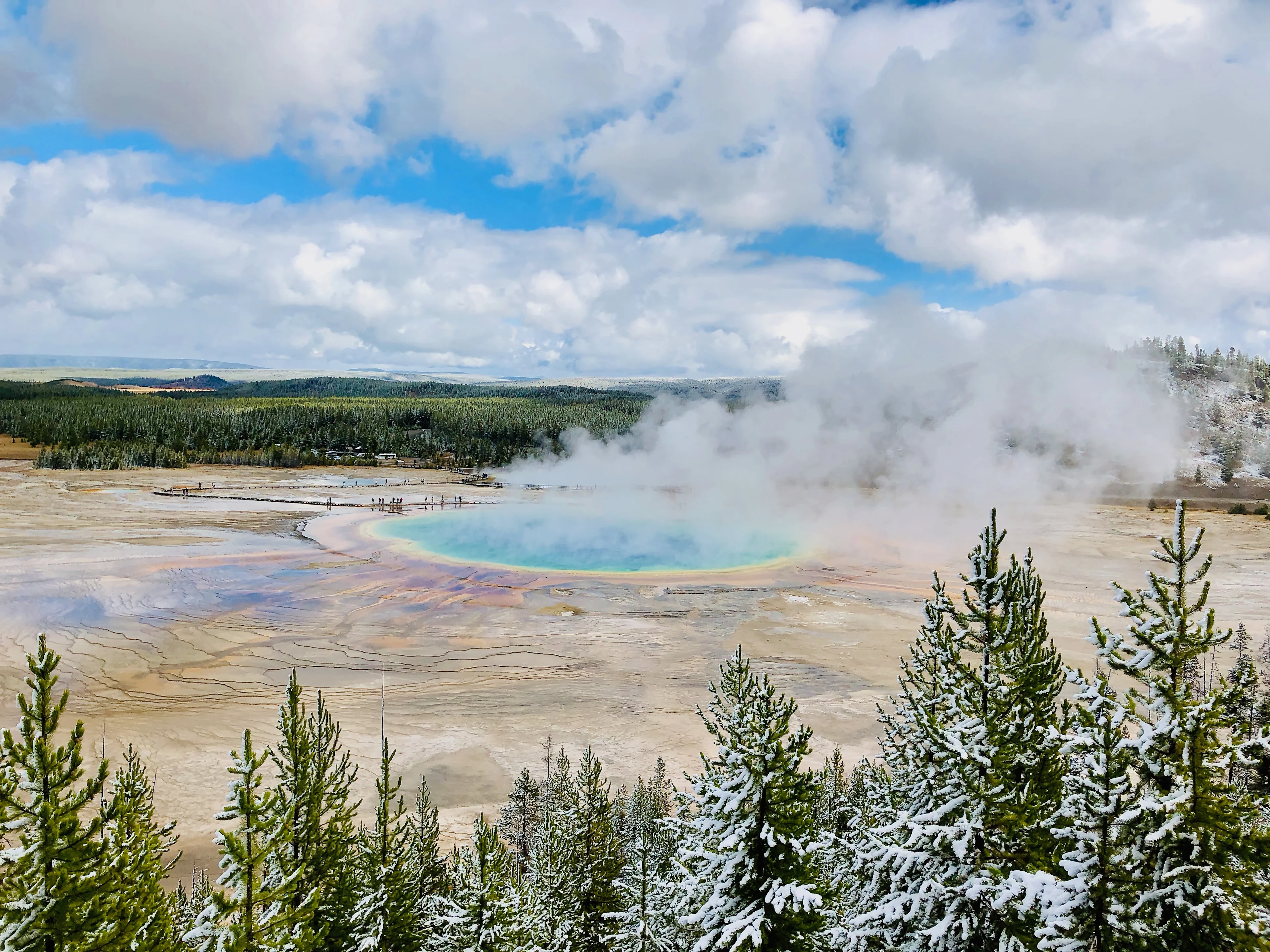
Yellowstone's Old Faithful geyser might stop erupting, here's why
Increasingly severe drought conditions are raising concerns that the famous geysers at Yellowstone National Park could erupt less frequently or stop altogether.
Old Faithful is a famous geyser located in Wyoming’s Yellowstone National Park and is internationally recognized for its eruptions that occur at regular intervals, typically every 90 to 94 minutes. However, scientists warn that this geyser may struggle to live up to its name in the coming years.
A study published in Geophysical Research Letters states that Old Faithful could erupt less frequently or entirely stop erupting as severe drought conditions become more prolonged and widespread. The researchers discovered that trees grew on top of the geyser mound during the years 1233-1362, which was a peculiar finding since trees cannot survive the hot and highly alkaline waters that geysers release. They figured that for this to happen, something must have stopped Old Faithful from erupting for several decades.
Geysers are considered to be a rare phenomenon because they require an abundant water supply and are only found in areas with active volcanic activity because the magma acts as a source of heat. While changes in volcanic activity might seem like a probable explanation for Old Faithful’s inactivity 800 years ago, the researchers ruled this out after studying dissolved components in the geyser’s erupted water.
Earthquakes were also ruled out as a potential contributor to the frequency of the geyser’s eruptions due to the lack of large earthquakes that occurred between 800-1300.

Grand Prismatic Spring in Yellowstone National Park. Geysers are hot springs that are characterized by intermittent, turbulent discharges of boiling water and steam. Credit: JT Ray via Unsplash
The only factor that was correlated with Old Faithful’s inactivity and the tree growth on the geyser mound was a severe drought at the end of the Medieval Climate Anomaly, which was when abnormally warm temperatures persisted in North America from approximately 900 to 1300.
The small particles of wood that were once tree stumps and roots were found in the Old Faithful geyser mound, which date back to 1233-1362. The size of the wood fragments were 2 cm or larger and stems that were largely intact stretched over 2 metres in length. There were roughly 81 years between the oldest and youngest samples from the same tree, which the study says indicates the length of time the hot, dry temperatures impacted tree growth and the geyser’s water supply.
Records indicated that trees on the Old Faithful mound died in the mid-1300s due to a significant rainfall event, which the researchers said increased water levels in the region and allowed the geyser’s eruptions to resume.

Old Faithful geyser in Yellowstone National Park. Credit: Mike Goad via Pixabay
Old Faithful’s records date back nearly 150 years to the date that Yellowstone became the United State’s first National Park in 1872. The researchers say that 60-65 minutes used to pass between Old Faithful’s eruptions in the 1950s, which then increased to 90-94 minutes since 2001. These changes in the geyser’s eruptions were once again linked to the drought conditions that were persistent in this part of the U.S. until 2010.
Climate models project an increase in severe drought conditions in the Yellowstone area as well as large wildfires by 2050, partly due to temperatures increasing by nearly 3°C, which will lead to “a major transportation of Yellowstone’s ecosystems.”
There are approximately 1,000 geysers in the world and nearly half of them are located in the Yellowstone region. The researchers conclude that tourism at Yellowstone National Park could be impacted if the eruptions of Old Faithful and other geysers become less frequent.
“Visitors will need to spend more time waiting for geyser eruptions, or possibly not see any at all. This might require readjustment of Yellowstone National Park’s infrastructure.”
Top Photo Credit: Adobe Stock












